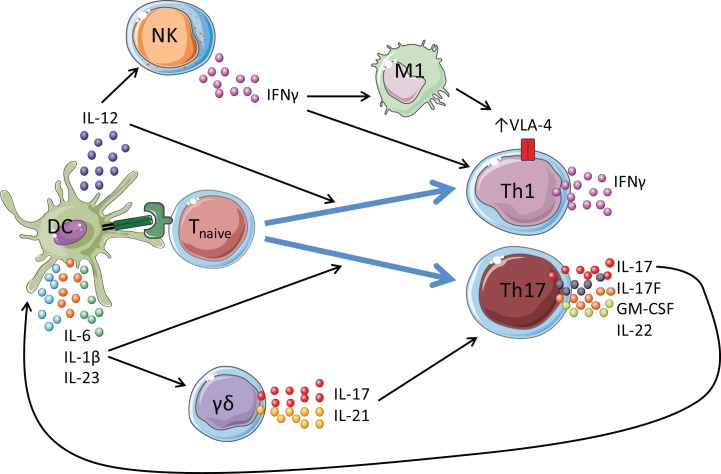Figure 1.
Proposed roles for γ δ T cells and NK cells in amplifying pathogenic CD4+ T cell responses in EAE. Dendritic cells (DCs) are activated by TLR and NLR agonists. Antigenic peptide is presented by MHC class II molecules on DCs to the TCR on T cells. This, along with co-stimulatory signals, activates the T cell. Once activated, DCs secrete cytokines including IL-1β, IL-6, IL-23, and IL-12 that promote the polarization of naïve T cells into effector cells. IL-12 promotes the induction of Th1 cells, which are primarily IFN-γ producers. IL-1β, IL-6, and IL-23 promote the differentiation and expansion of Th17 cells, which secrete IL-17 (and IL-22, GM-CSF, IL-21) and mediate protection against extracellular pathogens, such as fungi, and are heavily implicated in the pathology of autoimmune diseases. γ δ T cells secrete IL-17 and IL-21 following stimulation with IL-1β and IL-23 without TCR engagement, which act in an autocrine loop to promote further IL-17 production by Th17 cells in the development of EAE. NK cells provide an early source of IFN-γ to drive VLA-4 expression on Th1 and Th17 cells, allowing these cells to traffic from the peripheral lymphoid organs and into the CNS.

